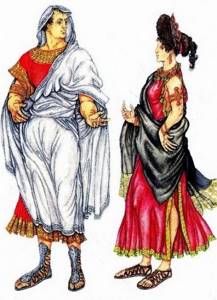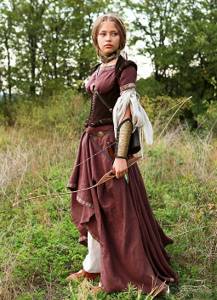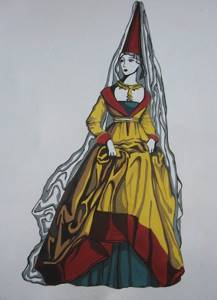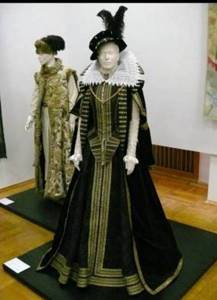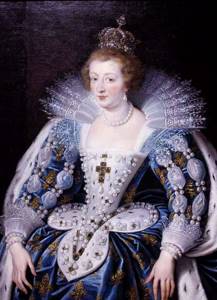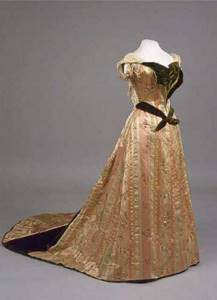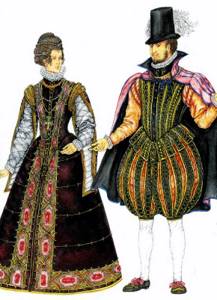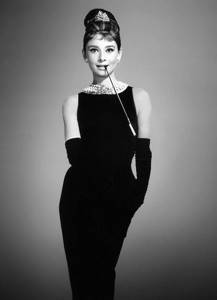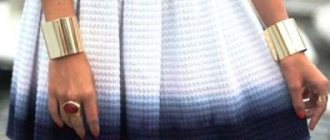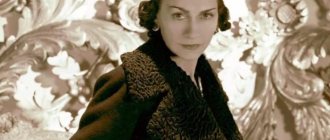| The style of this article is non-encyclopedic or violates the norms of the Russian language. The article follows the stylistic rules of Wikipedia. |
Francesco Renaldi - Indian Woman with a Hookah (1789).
Woman in Dhaka wearing Bengali muslin Exploring the history of clothing and textiles
tracks the emergence and use of textiles and other materials. Studying the history of textiles also helps track the development of clothing technology throughout human history. Wearing clothes is a uniquely human characteristic and is a feature of most human societies. It is unknown when humans began wearing clothing, but anthropologists believe that animal skins and vegetation were used as protection from cold, heat and rain, especially as people migrated to new climates. Clothing and textiles have been important in human history, showing what materials were available in different civilizations at different times and what technologies were used to create them. The social significance of the finished product reflects their culture.
The fibers can be felted into a finished material or spun into yarn that can be used in knitting or weaving to make fabric. Similar fabric was discovered in the Middle East during the Late Stone Age[1]. From ancient times to the present day, textile production techniques have continually evolved and the choice of textiles available has influenced the way people dress and decorate their surroundings[2].
Material remains discovered through archaeology are used to study clothing and textiles. The making of various textiles and the process of their production are widely depicted in art, which also helps in study. There are documents relating to the manufacture, acquisition, use and trade of textiles, tools and ready-made clothing. The study of the history of textiles, especially its early stages, is part of material culture studies.
Content
- 1 First use of clothing 1.1 Stone Age
- 2.1 Ancient Egypt
- 3.1 Byzantium
- 4.1 1450s
- 5.1 1525
- 7.1 1800s
- 8.1 1900s
- 9.1 2000s
First use of clothing
There is evidence that people first began to wear clothes 100,000–500,000 years ago[3].
Genetic analysis of the body louse, which lives in human clothing, shows that it diverged from the head louse about 170,000 years ago, supporting the theory that humans began wearing clothing around this time.[4]
The use of sewing needles dates back at least 50,000 years (Denisova Cave, Siberia). The oldest (60,000 years old) needle (no shaft or eye) was found in Sibudu Cave, South Africa. Other early examples of needles, dating back to 41,000-15,000 years ago, have been found in several places, such as Slovenia, Russia, China, Spain and France.
The earliest discovery of dyed flax fibers dates back 36,000 years and was found in a prehistoric cave in Georgia[5].
Stone Age
See also: Ötzi § Clothing and shoes
It got colder in Europe for a long time: gone are the days of the dominance of a mild tropical climate, when people thought more about jewelry than about clothes.
Elephants, rhinoceroses and hippopotamuses were replaced by reindeer, bears and lions, whose fur and skins, sewn with sinew and hair, successfully play the role of warm clothing: the animal’s paws became straps, and the backs with tails became skirts. Men dressed more modestly than women; men's clothes did not have straps - they tied animal skins over their right shoulder.
Decorations include fangs and animal bones, stones, and amber.
Ancient civilizations
Nakht in skhenti, his wife Taui in kalasiris with a cape and a necklace of usekh clutching a menat. Tomb TT52, 15th century BC e.
Ancient Egypt
Main article: Costume of Ancient Egypt
The production of linen fabrics in Ancient Egypt dates back to 5500 BC. e. The cultivation and domestication of flax, possibly imported from the Levant, is documented as early as 6000 BC. e. Reed, palm, and papyrus fibers were used alone or together with flax to make rope and other types of textiles. Data on wool production in Egypt during this period are scarce. The traditional clothing of men was the skhenti
, women - dress with wide straps
kalaziris
. Over its long history, the costume of the ancient Egyptians changed slightly, complemented by capes and accessories, responding to the needs of society and climate change[6].
The oldest dress known today (eng. Tarkhan dress
) was found in Egyptian Tarkhan in 1913 and dates back to 3482 - 3102 BC. e.[7][8].
Ancient Mesopotamia
Main article: Costume of Ancient Mesopotamia
Ancient world
Main articles: Costume of Ancient Greece
and
Fashion in Ancient Rome
The Greeks wore rectangular pieces of woolen or linen fabric, securing them on the shoulders with two brooches and on the belt with a belt.
Women wrapped themselves in peplos - a piece of thick fabric two meters long and one and a half wide. Chitons are robes that are smaller in size and lighter. Knee-length tunics served as undershirts for young men. A short cloak worn on top, which was fastened with a buckle on one shoulder, was called a chlamys. Another type of cloak, the himation, could also serve as a night cover.
The Etruscans remade the Greek cloak, cutting it in the shape of an elongated semicircle. This is the future Roman toga. Very large - up to seven meters - it was so heavy that help was required to drape it into it. The law stated: officials wear white togas, victorious commanders wear purple or gold. Women chose according to their taste.
Ancient China
Ladies Making Silk
, a 12th-century painting by Emperor Huizong (a remake of the original by 8th-century artist Zhang Xuan), illustrates the production of silk fabric in China.
See also: The Great Silk Road
Early evidence of silk production in China is found at the Yangshao culture site in Xia, Shanxi. This is evidenced by the cut cocoon of a silkworm, dating back to 5000 - 3000 BC. e. Fragments of primitive weaving looms from around 4000 BC. e. discovered in the Hemudu culture sites in Yuyao. Scraps of silk from 2700 BC. e.found at the site of the Liangzhu culture in Qiangshanyang, Huzhou, Zhejiang[9][10].
Iron Age in Europe
The Iron Age is broadly defined as the period from the end of the Bronze Age (c. 1200 BC) to the beginning of the Middle Ages (500 AD). The clothing of the peoples of Europe of this period can be judged from the surviving burials. The studied items of clothing on the territory of modern Denmark indicate woolen dresses, tunics and skirts[11]. Such clothing remained shapeless and was secured to the figure with leather belts, metal brooches or pins. Clothes were sometimes embroidered with contrasting patterns, often along the edges. Men wore pants with pieces of fabric wrapped around their calves. People kept warm with woolen capes and animal skins, which they probably wore with the fur inside. They also wore hats made of skins with fur inside. Hair was braided into braids or made into Siev knots[12].
Contradictions in the development of fashion
From all this we can conclude that clothes can not only say a lot about a person and his era, but also reveal his most secret thoughts.
A strange contradiction: on the one hand, clothing reflects a person’s individuality, his worldview and culture, but on the other hand, it is part of fashion, which evokes a general instinct to imitate. And any imitation, according to psychologists, is part of self-defense, a normal reflex of herd creatures, one way or another reminiscent of human society. However, it is precisely this contradiction, expressing imitation, that is the main prerequisite for the development of fashion, because all the transformations occurring in fashion trends are, in fact, a fusion of contradictions.
Adapting to the world around them, people not only completely follow fashion, but also try in every possible way to stand out, to achieve self-stylization, thereby expanding their opinion of their inner world. Today there are all the necessary conditions to stand out and emphasize your individuality.
Middle Ages
Justinian I with his court. Mosaic in San Vitale (Italy)
Byzantium
Main article: Byzantine secular costume
See also: Byzantine silk
Byzantine costume is distinguished by special luxury. The antique toga turned into a cloak of golden fabric, which was worn over tunics embroidered with patterns and pearls. For women, a long veil covers the head, and jewelry is used in their hairstyles. Tight men's trousers are decorated with a scattering of flowers.
Early Middle Ages
The Europeans dressed in tight-fitting tunics and bra pants, helmets and chain mail, because they were good at metal processing. The Goths, Germans, and Burgundians have no equal in the art of decorating metal with embossing, enamels, and inlays.
High Middle Ages and the rise of fashion
See also: European fashion of the 12th century
Clothing in Europe in the 12th and 13th centuries remained simple and uniform for both men and women. The traditional combination of a short tunic with trousers for working-class men and a long tunic with outerwear for upper-class women and men remained. The clothing of ordinary residents has remained virtually unchanged for 300-400 years[13]. In the 13th century, great progress was made in the dyeing and processing of wool, which was used for outerwear. Clothes that fit close to the body were made from linen fabrics.
Rogier van der Weyden, illustration from the Chronicle of Hainaut (Dutch) (1447)
The Crusaders brought information about the exquisite fabrics and silks there to Western Europe from the Levant. In Northern Europe, silk was imported and was considered a very expensive luxury[14]. Wealthy people could afford brocade from Italy or even further afield. Fashionable Italian silk is decorated with patterns of circles and animals and was bought in Ottoman Bursa, where it was brought from Yuan Dynasty China along the Silk Road.[15]
The sleeves of women's cotta dresses must be so narrow that they need to be sewn up each time they are worn.
The Church requires Jews to wear a distinctive item of clothing, a yellow pointed cap.
The mid-14th century marks the emergence of “fashion” in Europe[16]. Since this period, European fashion has changed significantly and acquired striking distinctive features from other civilizations and periods[17]. A more fitted cut appears, complemented by laces and buttons[18]. Mi-parti clothing has become fashionable for men
, sewn from two contrasting fabrics[19].
Popular footwear of the 14th-15th centuries, brought from the East[20], was the Krakow
(or
poulaines
) with long narrow socks. The longer the toe of a shoe, the richer and more noble its owner was considered. Sometimes the length of the sock reached such dimensions that it had to be tied up so that it would not get in the way when walking[21].
1350s
The peasants are freed from their lords. Craftsmen and traders in cities form economic groups - workshops, guilds. In Italy and France, artists and poets have a new goal: the search for beauty.
Men wear short suits. Clothes are now adjusted to fit using lacing.
Extravagant hats appear. Women create structures from fabric, placing cones or pads under it and securing them with long pins.
The Church considers such hats “with horns” as a sign of the devil. Children shout after women dressed like this, “au hennin!” Since then, the word “gennin” has meant a tall female headdress.
Pre-colonial civilizations
Main articles: Aztec clothing
and
Mayan Costume
Renaissance
Jan Van Eyck, " Portrait of the Arnolfini couple
" (1434). National Gallery, London
Main article: Costume of the Late Middle Ages (France)
Wool remained the most popular fabric for all classes, followed by linen and hemp.[15]
1450s
France ends the Hundred Years' War, England begins the War of the Roses. It’s the Renaissance in Italy: ladies speak ancient Latin, enlightenment is being revived. Silk is spun in Tuscany. “Unusual” clothes are created for the holidays. Women wear a long embroidered upeland with a trailing train, and underneath it is a tight-fitting cotta - an underdress. The top of men's hats is wrapped with a scarf, the end of which goes down to the outer clothing. There are short kaftans of Turkish origin.
1470s
In Venice, gondolier boatmen decorate their bonnet hats with ostrich or peacock feathers and wear colorful pants. Venetian women have chignons pinned on their heads - false hair, and in their hands are handkerchiefs they invented. Council members wear robes - long robes, straight and pleated. Here, the silk trade with Asia never ceased. Now velvet is a triumphant success among Venetian artisans.
Printing was invented: first of all, the Bible was printed, but fashionable engravings would soon appear.
Women shave their hair above the forehead and attach great importance to head decoration. Thin scarves are tied around high chignons, delicate fabric is laid in a cone on a light brass frame, black velvet bedspreads frame the face, emphasizing its languid pallor. Necklines are becoming deeper.
At the court of Castile, Queen Joan of Portugal wants to hide her pregnancy - after all, she is not pregnant from her husband. She introduces into fashion a frame skirt with rims made of immature reeds - verdugo, which will later become French swivels and hoops.
Another fashion trend: krewe
- slits on the sleeves of the robe, a rich outer dress, through which the embroidered undershirt is visible.
In England, beaked hats, in the style of Robin Hood, are as successful as dogalinas from Italy - capes with wide sleeves turned towards the shoulders.
The Renaissance swept across all European countries. New trends: soft fabrics, deep necklines and wide sleeves. Men wear flat hats with feathers.
Illustration from 1520 from the Book of Dresses by M. Schwartz, one of the first books about fashion
Fashion history
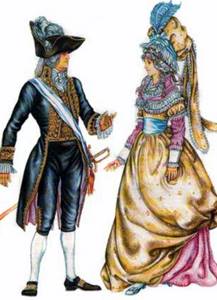
Throughout the history of human civilization, perhaps no other component has reflected the characteristics of an era as colorfully as the history of the creation of fashion. And if at the dawn of humanity, clothing had a purely practical purpose, then quite soon an aesthetic component was added to the traditional protective function. The history of the emergence of fashion for Western civilization can be dated back to the Roman era. The Romans not only continued the ancient Egyptian tradition of dedicating different colors of clothing to different deities, but also introduced class coloring into the color palette - noble purple, for example, could only be worn by patricians. The first example of a dress code was also the Roman toga - Romans could only appear in the Senate, court and stadium in togas. Simpler togas were made of wool or linen. Silk and even gold threads were used to create more refined fabrics.
After the majestic Rome, the costumes of the early Middle Ages look simple and even poor. Functionality again comes first. Men's and women's outfits differ mainly in long shirts. Dyes are used infrequently. Clothes are made from flax, hemp and even nettles (remember Andersen's fairy tale!) The situation was radically changed by the Crusades. It is the 11th-12th centuries that most researchers associate with the history of fashion and consider it the beginning of its formation.
Fashion of the Middle Ages and the Renaissance
The Crusades dramatically changed European society. It is from these times that the history of women's fashion and women's costume begins. The cult of the beautiful lady brings into fashion a neckline, fitted dresses, sleeves falling to the floor - the most feminine image is sharply dissociated from the brutal masculine. Soon another trend appeared in medieval fashion, which lingered for several centuries. “Inconvenient fashion” - cone-shaped headdresses that reached a meter in length among the highest nobility, curved toes of shoes that had to be tied up, incredibly long trains - all this was intended to emphasize the status of the nobility and its exclusivity.
The Renaissance era contributes to the history of fashion and style. Jeanne of Portugal, in order to hide an illegitimate pregnancy, introduces frame skirts (at their peak, they reach 7 meters in diameter). Another fashionable element - slits on the sleeves of the outer dress, through which the undershirt is visible - has taken root in both women's and men's suits. But one cannot do without fashionable curiosities - such as Spanish buffa pants, short and round, stuffed inside with tow, or huge wigs from the time of Louis XIV in which, in addition to jewelry, one could often find insects and even mice.
Fashion of the New Age
The era of bourgeois revolutions brought colossal changes to the history of fashion development. Members of the Jacobin Club gave a start to life for men's trousers, the times of Napoleon brought back antiquity into fashion, and in 1880 the women's corset appeared. The 19th century was marked by the appearance of the jacket and an unusually high rate of change in fashion trends. For example, the history of hat fashion has recorded the change of 30 (!) fashion models in one season. Caps, bonnets, berets, turbans, bibi hats - the 19th century not only amazes with the variety of women's models, but also with a wide range of men's headwear: from a respectable top hat to the cowboy hat that appeared in 1865. The advent of the 20th century creates a real breakthrough in the history of world fashion. Tango and Charleston significantly reduce the length and volume of dresses, and flirty tulip hats are placed on short-cropped hair. And in 1926, Coco Chanel introduced the world to the little black dress, which marked the beginning of the history of modern fashion.
|
|
|
|
|
|
|
|
|
Early Modern
1525
In France, necklines are also common in men's clothing. The puffy sleeves of camisoles and dogalins are made with slits. The lower part of the shawls became long stockings made of silk tights. The top one is short pants with a codpiece.
Shoes with a wide square toe appear - “bear paw”.
Costumes of London women. Watercolor from the "World Theater of Ancient and Modern Fashion" by Lucas de Geer (English)Russian. Around 1575.
During the Renaissance, perfume replaced cleanliness for a long time. The notoriety of public baths and the strict regulations of the Church Reformation killed the medieval habit of frequent washing.
1540s
After the Battle of Pavia (1525), victory went to Spanish stiffness. The end of the neckline - now tightly buttoned robes with a high collar and padded shoulders have a rigid pyramid shape. The predominant colors are black and gold. Men carry swords at their sides.
The exception remains Venice, which escaped Spanish influence. Here the ladies walk on supports that increase their height by 30 centimeters. The bravest ones wear long johns under their skirts for fullness. To achieve a blond color for their hair, Venetian women wear bottomless hats: their hair becomes lighter, fading in the sun.
1580s
Queen Elizabeth of England has 6,000 dresses and 60 wigs. She loves starched collars.
And the ladies at the court of Henry III wear swivels with rollers placed under their skirts (in English - farthingales). For men, the lining of panzer camisoles is stuffed with tow or sponge to protect against assassination attempts, and the collars are decorated with corrugated cutter collars. They wear very short culottes.
From approximately 1580 to 1635, rebato
(also
picadille
) - a wide standing collar on a frame with jagged edges[22]. In women, the rebateau sometimes rose much higher than the head, resembling wings[23][24].
History of clothing
Clothing, being an integral part of a person’s life, can not only express his inner world, but also bring his figure closer to the ideal accepted for a given period of time. For example, back in the Middle Ages, a generally accepted part of the female silhouette was a protruding belly, which was replaced by an extremely thin waist - an indispensable attribute of the Rococo style. The transition to normal natural lines only occurred in the 20th century, when humanity finally decided to put an end to painful and rather unhealthy body deformities.
As some trends in history show, in addition to changing the basic silhouette, the human desire to slightly exaggerate the size of the body was quite popular. A high position in society or self-esteem was emphasized not only by noble deeds, but also by optically enlarging the figure with the help of crinoline. An important factor indicating belonging to a particular class group in many times was the length of clothing or its components.
Features of fashion through the centuries
If we talk about European standards of decency accepted in fashion, then there have been no special transformations. However, the opportunity to expose women's legs at the beginning of the 21st century was a real revolution, which resulted in the subsequent desire for nudity in clothes. As a rule, the degree of uncovered female body directly depends on the traditions or customs of a particular territorial group (for example, it is customary for Muslim women to cover their faces from prying eyes).
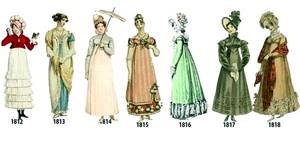
A clear indicator of good behavior, among other things, was the extent of the neckline. Even in ancient times, the Greeks knew a considerable number of types of cutouts on women's dresses, which significantly expanded their range during the Renaissance.
During this cultural period, women not only corrected the silhouette with the help of a corset, but also allowed the possibility of cutting dresses with an open back. But conservative Spanish fashion completely prohibited sensual pleasures in the form of a neckline until the advent of the Baroque era, when increased necklines returned to fashion again.
